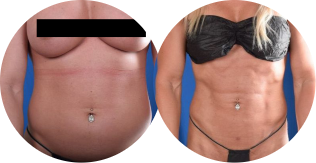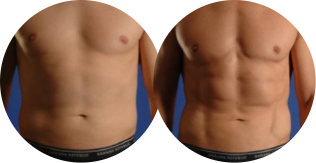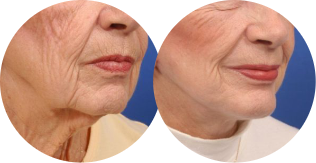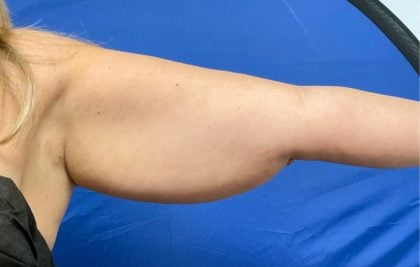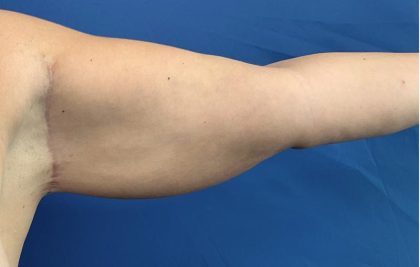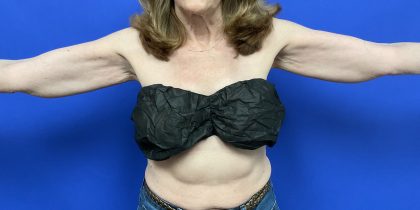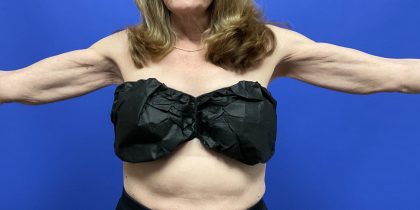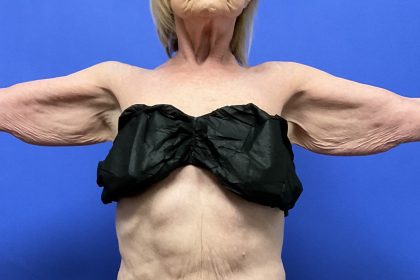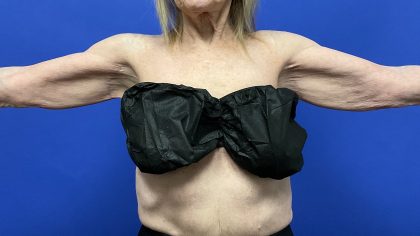Vibration amplification of sound energy at resonance, otherwise known as VASER, liposuction is an ultrasound-assisted fat removal technique that garners effective body contouring results. It also has a skin-tightening effect. Pioneered by Dr. Alfredo Hoyos, who worked closely with Dr. Millard for many years, VASER liposuction is a proven, effective way for patients to reach their desired cosmetic goals. Dr. Millard is internationally renowned for VASER Hi-Def. He’s taught 800 surgeons in over 30 different countries his body countering techniques with VASER liposuction. While Dr. Hoyos founded this procedure, Dr. Millard was the second surgeon to ever perform it following him and pioneered its practice in the United States so people travel from all over the world to see him for it.
Fat, or adipose tissue, is an essential connective tissue in the body. It provides us with cushioning beneath the skin and protects our vital organs. However, genetics, age, lifestyle, and other factors can contribute to excess fat accumulation in certain areas of the body. Though diet and exercise can help to some extent, many people find that the only solution to persistent areas of fat is a cosmetic procedure. But what exactly happens to fat during VASER lipo? And how does this affect your results?
Serving the communities of Englewood, Denver, and far beyond, Dr. John Millard is one of the world’s leading practitioners of VASER liposuction. Dr. Millard provides effective cosmetic solutions to remove stubborn areas of fat permanently, for a slimmer body contour and a renewed sense of self-confidence. Call Millard Plastic Surgery at (303) 792-5665 or complete a simple form to book your personal VASER liposuction consultation.
Before & After Photos
Before and After Photos
The Science of Fat
We all have fat deposits throughout our bodies. The volume of fat in these areas may change over time as we age, or be altered after a significant event such as pregnancy. But, although it may cause trouble for us in certain areas, adipose tissue is a vital part of our anatomy. One of its primary roles is storing surplus energy from the food we consume as lipids; fatty compounds that are involved with many bodily processes. It also protects us from the cold and protects our vital organs from impact.
There are two types of adipose tissue; subcutaneous fat, and visceral fat. While visceral fat is located deeper, between our vital organs, subcutaneous fat sits between the lowest level of the skin and the muscles. When viewed with the naked eye during surgery, fat can be easily recognized by its globular form and yellowish color.
Adipose tissue is not just a place to store extra energy. It plays a key role in the endocrine system and helps the body maintain homeostasis. Adipocytes, or fat cells, are complex cells that send chemical messages including cytokines, hormones and growth factors – essential for cell communication and new cell formation. (1)
Dealing With Unwanted Fat
When too much fat accumulates in particular areas, it can result in an imbalanced silhouette. The all-too-familiar abdominal pooch, excess upper arm fat, bulging back fat, and thicker thighs, are just a few common areas of concern. Similarly, some people may feel that their fat deposits are not evenly distributed. A common patient complaint is that they have too much fat in the abdomen and not enough in the buttocks, hence the enduring popularity of the Brazilian Butt Lift. Body fat distribution in both lean and overweight adults varies tremendously from person to person. Research has identified the following factors that affect body fat distribution:
- Genetics
- Cigarette Smoking
- Childhood Obesity Onset
- Alcohol Intake (2)
Many people go to great lengths to push their bodies to shed excess pounds and reduce fat, but sometimes, it requires more than just eating healthily and working out. That’s why VASER liposuction is such an effective option for our patients! It allows them to achieve a slimmer profile in one straightforward procedure.
Fat Elimination with VASER Liposuction
A VASER-assisted liposuction procedure dislodges and removes fat from the area of treatment. The following areas most commonly require treatment.
- Abdomen
- Back Fat
- Buttocks
- Chest
- Chin
- Flanks
- Legs
- Bra Line
- Buttocks
- Thighs
- Upper Arm
Visit our website to read more about the science behind VASER.
What is VASER HiDef?
For true muscle definition, Dr. Millard offers patients an advanced form of liposculpture: VASER HiDef. Although it’s more complex and time-consuming than traditional liposuction, VASER HiDef can accentuate your six-pack for a more toned appearance.
The VASER ultrasound-assisted lipo emulsifies fat, removes superficial fat, and selectively retains and removes fat from both the superficial and deep fat layers. (3) This defines musculature for a striking three-dimensional effect! Patients now have the added benefit of VASER HiDef 4D; a HiDef procedure that adds a fat transfer component.
If you are interested in finding out more about VASER HiDef or VASER 4D, please schedule a consultation with Dr. Millard at his Englewood office.
Destroying Fat with VASER
The VASER process is so effective because it removes fat in a unique way. The device emulsifies adipose tissue and supports skin tightening with the help of ultrasonic sound waves. These waves cause vibrations at optimal frequencies to dislodge the tissue for easy removal. The fat is liquefied and suctioned away via a thin cannula; a hollow metal tool used in all liposuction procedures. The device is designed in such a way that it significantly minimizes any effects on the remaining tissues.
Although the precise way it does so is not known, researchers believe ultrasound aids liposuction in three ways:
- Cavitation: The breaking down of fat cells with ultrasound.
- Thermal Effect: The contraction of skin caused by heat.
- Direct Mechanical Effect: The physical effect that the device has on the treatment area (4)
A VASER procedure varies in length according to the area you have chosen to contour. Similarly, the type of VASER probe Dr. Millard selects depends on the area of treatment, as the contours of the underlying tissues vary. Usually, broader probes are used to break up larger volumes of fat, while thinner probes can address smaller fat volumes and further aid more intricate contouring. (4)
Target Areas
Three layers of fat can be targeted successfully with VASER lipo, VASER HiDef, and VASER 4D: the subdermal fat layer, the superficial fat compartment, and the deep layer.
- Subdermal Fat: The most superficial fat targeted in VASER lipo is the subdermal fat layer. Dr. Millard carefully “unloads” the skin from the fat which causes skin contraction.
- The Superficial Fat Compartment: Dr. Millard can significantly reshape treatment areas with the precise removal of fat from the superficial compartment. He tailors the prominence of anatomical features (such as well-defined abs) based on a patient’s unique anatomy.
- Deep Fat Layer: Deep fat is located underneath a thin layer of connective tissue called the superficial fascia. Dr. Millard can access this fat while keeping areas of the fat above intact which accentuates the musculature of the area.
VASER, VASER Hi-Def, and VASER Hi-Def 4D are a trifecta of fat-eliminating devices that can help you achieve the body you desire. However, Dr. Millard stresses that a liposuction procedure is not intended to be a replacement for weight-loss surgery. All patients should have realistic expectations of what they can achieve with VASER lipo. That’s why Dr. Millard invites every patient to get up to speed with the specifics of their procedure at a private consultation.
Personal Consultation
Your consultation at Millard Plastic Surgery will give you the opportunity to find out which VASER liposuction procedure is the right choice for you. Dr. Millard will take this time to inform you about the benefits of treatment, and will perform a physical examination. After you have given us some details about your health background, and Dr. Millard deems you a good candidate for treatment with VASER liposuction, we will give you some written information regarding your preparation and recovery, and finalize your treatment date.
Approximately 50% of Dr. Millard’s patients do not live in the Denver area. Out-of-town patients are welcome to schedule a virtual consultation. Find out more on our website.
Cost of VASER Lipo in Denver, CO
Every VASER liposuction procedure is tailored to the requirements of the patient. The type of VASER procedure chosen, and the treatment area are both important factors. As a result, costs will vary. Financing may be available for qualified candidates. To book your VASER liposuction consultation at Millard Plastic Surgery, please call (303) 792-5665 or book your appointment via our online form.
Interested in what a VASER procedure can do for you? Read more about VASER, VASER HiDef, and VASER Hi-Def 4 at Millard Plastic Surgery on our blog.
FAQ
Is VASER lipo more effective than standard liposuction?
Many surgeons view VASER liposuction as the superior treatment modality in liposuction. This is because, unlike standard fat removal procedures, VASER lipo uses ultrasound to dislodge and break down fat deposits. It can do so safely, with minimal disturbance to surrounding nerves and tissues.
Does VASER lipo permanently remove fat?
Yes! VASER liposuction liquefies and suctions away fat deposits from areas of excess. Once removed from the body, the fat cells are gone for good. And, by maintaining a healthy diet and exercise routine, patients can expect to keep their body contouring results for many years.
How long will it be before I see results from VASER lipo?
Most patients will see their initial results around 6 weeks after their procedure. For some patients, the skin tightening aspect may take up to 6 months.
References
- Coelho, M., Oliveira, T., & Fernandes, R. (2013). State of the art paper Biochemistry of adipose tissue: an endocrine organ. Archives of Medical Science, 9(2), 191–200. https://doi.org/10.5114/aoms.2013.33181
- Jensen, M. D. (2008). Role of Body Fat Distribution and the Metabolic Complications of Obesity. The Journal of Clinical Endocrinology & Metabolism, 93(11_supplement_1), s57–s63. https://doi.org/10.1210/jc.2008-1585
- HOYOS, A., & MILLARD, J. (2007). VASER-assisted high-definition liposculpture. Aesthetic Surgery Journal, 27(6), 594–604. https://doi.org/10.1016/j.asj.2007.08.007
